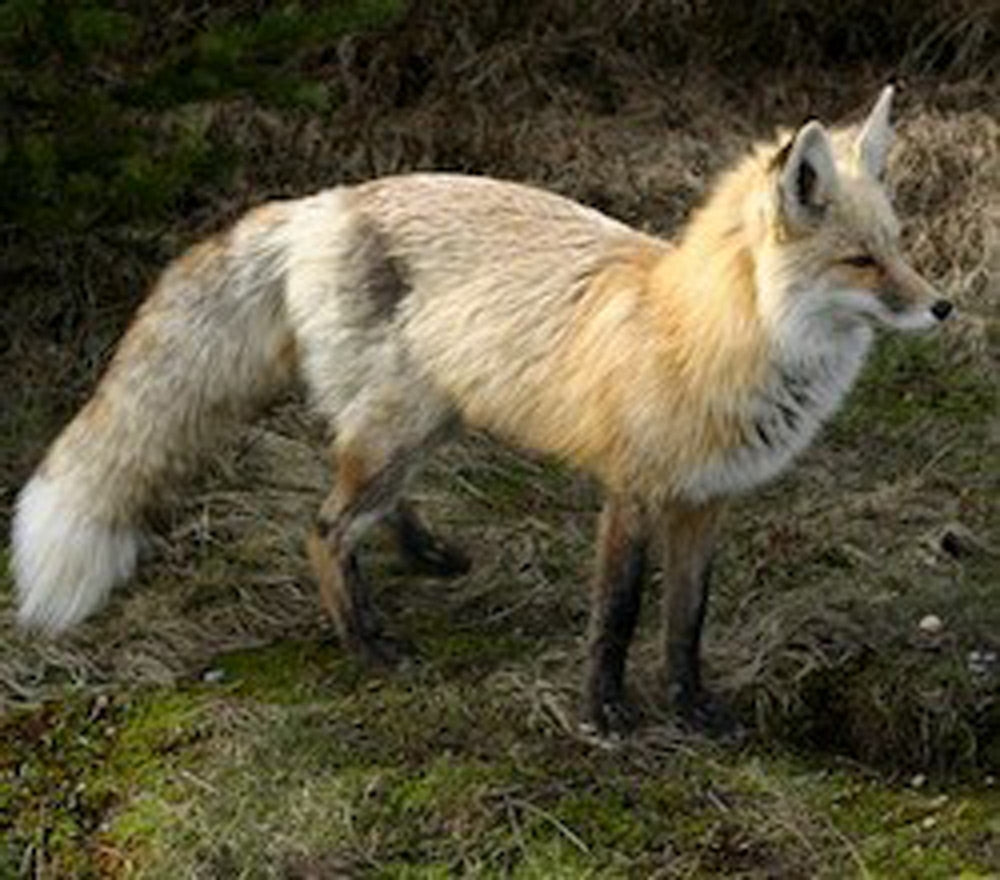Cascade Red Fox Faces Imminent Extinction in Washington
Matthew Russell
The Cascade red fox (Vulpes vulpes cascadensis) faces numerous threats that jeopardize its survival in Washington's Cascade Range. Once widespread across subalpine meadows, parklands, and alpine habitats, this unique subspecies has seen a significant contraction in its range and population size in recent decades. According to the Washington Department of Fish and Wildlife (WDFW), the Cascade red fox is now confined to less than half of its historical range, primarily in the South Cascades.
Shrinking Habitat and Climate Change
Climate change poses a substantial threat to the Cascade red fox. The subspecies is adapted to cold, high-elevation environments, and rising temperatures are altering these habitats. The WDFW reports that reduced snowpack and warmer temperatures facilitate the encroachment of forests into open meadows, diminishing the foxes' natural habitat. Additionally, these changes allow competitors like coyotes to move into areas previously dominated by the red fox, increasing predation and competition for resources.

Photo: Wikimedia Commons / National Park Service, License: Public Domain
The Cascade red fox is critically endangered in Washington.
Human Impact and Habitat Fragmentation
Human activities further threaten the Cascade red fox. Logging, development, and increased winter recreation lead to habitat destruction and fragmentation. A report from the National Park Service explains that mid-elevation timber removal disrupts the foxes' environment, making it harder for them to find food and mates. Moreover, vehicle collisions in areas like Mount Rainier National Park have become a significant mortality factor, especially as foxes become habituated to human presence and lose their natural wariness.
Predation and Disease
The introduction and proliferation of non-native predators, particularly coyotes, exacerbate the challenges faced by the Cascade red fox. Increased coyote populations result in higher predation rates and the spread of diseases such as mange, which can decimate fox populations. The Center for Biological Diversity emphasizes that disease transmission from coyotes poses a critical threat, especially given the already small population size of the foxes.

Photo: Wikimedia Commons / U.S. Fish and Wildlife Service, License: Public Domain
Their habitat has shrunk to less than half its original range.
Conservation Efforts and Legal Protections
Efforts to protect the Cascade red fox have intensified in recent years. In September 2022, the Washington Fish and Wildlife Commission classified the fox as an endangered species in the state. This designation aims to provide the necessary legal framework to implement conservation measures. Additionally, a recent petition filed by the Center for Biological Diversity seeks federal protection under the Endangered Species Act, arguing that without such safeguards, the fox may face extinction.
Regulatory Measures and Public Awareness
Regulatory actions have been taken to curb activities that harm the Cascade red fox. As reported by NW Sportsman Magazine, the Washington Fish and Wildlife Department has recently implemented emergency rule changes to prohibit trapping of foxes in national forests across the Cascades. These measures are temporary but crucial in preventing further decline while permanent protections are considered.
Community and Scientific Collaboration
Protecting the Cascade red fox requires collaboration between scientists, conservationists, and the local community. Ongoing research projects, such as those conducted by the Cascades Carnivore Project, aim to better understand the foxes' ecology and connectivity between populations. According to the National Park Service, genetic studies suggest that Mount Rainier foxes form a small, isolated population, highlighting the need for strategies that enhance genetic diversity and population resilience.

Photo: National Park Service, License: Public Domain
Climate change threatens their high-elevation environments.
A Call to Action
The survival of the Cascade red fox hinges on immediate and sustained conservation efforts. Reducing greenhouse gas emissions, protecting and restoring habitats, and implementing effective management practices are essential steps.
"These pretty little foxes need the powerful protections of the Endangered Species Act to have any chance at survival," stated Noah Greenwald of the Center for Biological Diversity.
The Cascade red fox symbolizes the broader challenges faced by montane species in a rapidly changing climate. Protecting this unique subspecies requires a multifaceted approach that addresses habitat loss, climate change, predation, and human impacts. Through concerted conservation efforts and legal protections, there is hope that the Cascade red fox will thrive once again in Washington's Cascade Range.
Click below and take action for the survival of this species!

